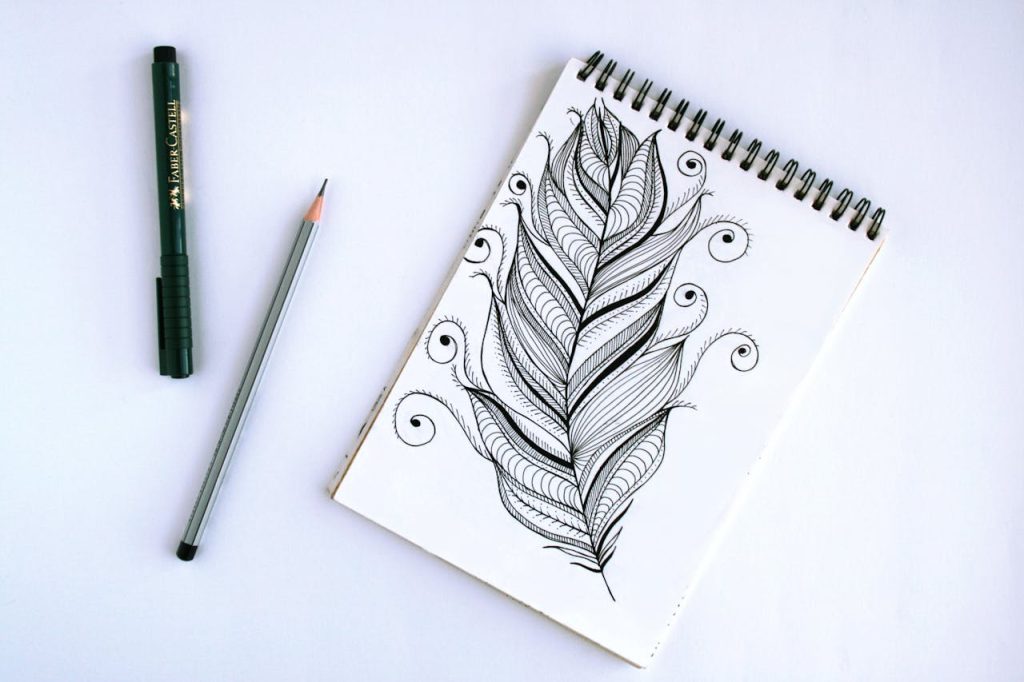Table of Contents
How to Draw with Pencil: Techniques and Tips
Drawing with a pencil is one of the most accessible and versatile forms of art. For centuries, artists have used pencils not only to sketch ideas but also to create intricate and realistic works of art. Mastering pencil drawing techniques requires practice, observation, and a solid understanding of various styles and methods. This essay will cover key techniques that form the foundation of pencil drawing, ranging from basic line work to advanced shading and blending methods.

Photo by Pexels
1. Choosing the Right Tools
The first step to successful pencil drawing is selecting the right tools. Pencils come in various grades, ranging from hard (H) to soft (B), with HB as a mid-point. Harder pencils (like 2H or 4H) are ideal for light sketching and details, as they produce lighter lines, while softer pencils (like 2B, 4B, or 6B) are perfect for shading and creating deep contrasts. Quality paper, erasers (kneaded and rubber), blending tools like stumps or tissue, and a sharpener are essential as well.
2. Basic Line Techniques
Drawing begins with lines. Developing control over line thickness, weight, and pressure can create texture, movement, and depth. Three main types of lines dominate pencil drawing:
- Contour Lines: These lines define the edges of shapes and help outline forms. They should be drawn confidently and cleanly, avoiding excessive erasing.
- Cross-Hatching and Hatching: These techniques create texture and shading by layering lines in varying densities and angles. Hatching uses parallel lines, while cross-hatching adds intersecting lines for deeper shading effects.
- Stippling: By using small dots instead of lines, stippling creates a unique texture and adds detail without harshness. This technique requires patience but is excellent for subtle shading and texture.
3. Shading Techniques
Shading is fundamental for creating dimension and bringing drawings to life. Learning to shade effectively requires mastering various pencil pressures and blending methods. Here are some primary shading techniques:
- Smooth Shading: Smooth shading is achieved by applying even pressure with a soft pencil, then blending with a tissue or blending stump. This technique is ideal for soft transitions and gradients.
- Gradient Shading: Creating gradients involves gradually decreasing pencil pressure, allowing a light-to-dark transition. Practicing smooth transitions between shades adds realism to the drawing.
- Cross-Hatching for Shading: Cross-hatching can be used for shading by layering lines at various angles. By increasing line density, artists can create the illusion of shadow and depth without smooth blending.
- Blending and Smudging: Blending smooths out pencil marks and softens shading. Tools such as a blending stump, cotton swab, or finger can be used to blend graphite. Avoid over-blending, as it can make the drawing look muddy and indistinct.
4. Creating Textures
Realistic drawings often require an artist to recreate the texture of different materials. Here’s how to approach some common textures:
- Skin and Hair: For skin, use smooth shading or subtle cross-hatching, blending to avoid harsh lines. Hair should be drawn with individual strands by layering soft, light strokes, gradually building up shadows in areas that need more depth.
- Fabric: Fabric can be challenging, as it involves capturing folds and shadows. Use contour lines and shading to create depth in areas where the fabric folds or overlaps. Light strokes and controlled shading capture the subtlety of fabric texture.
- Metal and Glass: To draw reflective surfaces like metal or glass, emphasize contrasts between light and dark areas and avoid blending. Using sharp, clean lines in light areas and intense dark tones in shadowed areas helps simulate reflections.
5. Building Depth and Perspective
Depth and perspective are crucial to creating a three-dimensional effect in a drawing:
- Overlapping: Place some elements in front of others by overlapping lines to create the illusion of depth.
- Size and Scale: Objects closer to the viewer appear larger, while those further away appear smaller. Adjusting object size within the composition creates depth and scale.
- Shadows and Highlights: Shading with attention to a light source enhances depth. Shadows give objects weight, while highlights bring focus and three-dimensionality. Practice observing how light affects real-world objects to master realistic shading.
6. Refining the Drawing
Final refinements include adding minute details and ensuring that the overall composition is balanced. Take breaks periodically to view the drawing with fresh eyes, catching any inconsistencies or areas that need more attention. Highlights can be added by carefully erasing parts of shaded areas, creating a balanced contrast.
7. Advanced Techniques for Realism
For those who want to move into hyper-realistic drawing, attention to detail and texture becomes paramount. Advanced artists use layering techniques, often working from lighter shades to darker tones, adding tiny, intricate details that mimic real textures. Precision tools like mechanical pencils help achieve realistic textures for intricate subjects like eyes, hair, or textured surfaces.
Conclusion
Mastering pencil drawing techniques opens the door to a world of artistic possibilities. From the choice of pencil to the type of lines, shading, and blending methods, each step offers unique opportunities to bring drawings to life. By dedicating time to practice these foundational techniques, artists can develop a style that reflects both technical skill and personal expression. Over time, as one’s abilities improve, the simple pencil can become a powerful tool for creating vivid and compelling works of art.


No responses yet